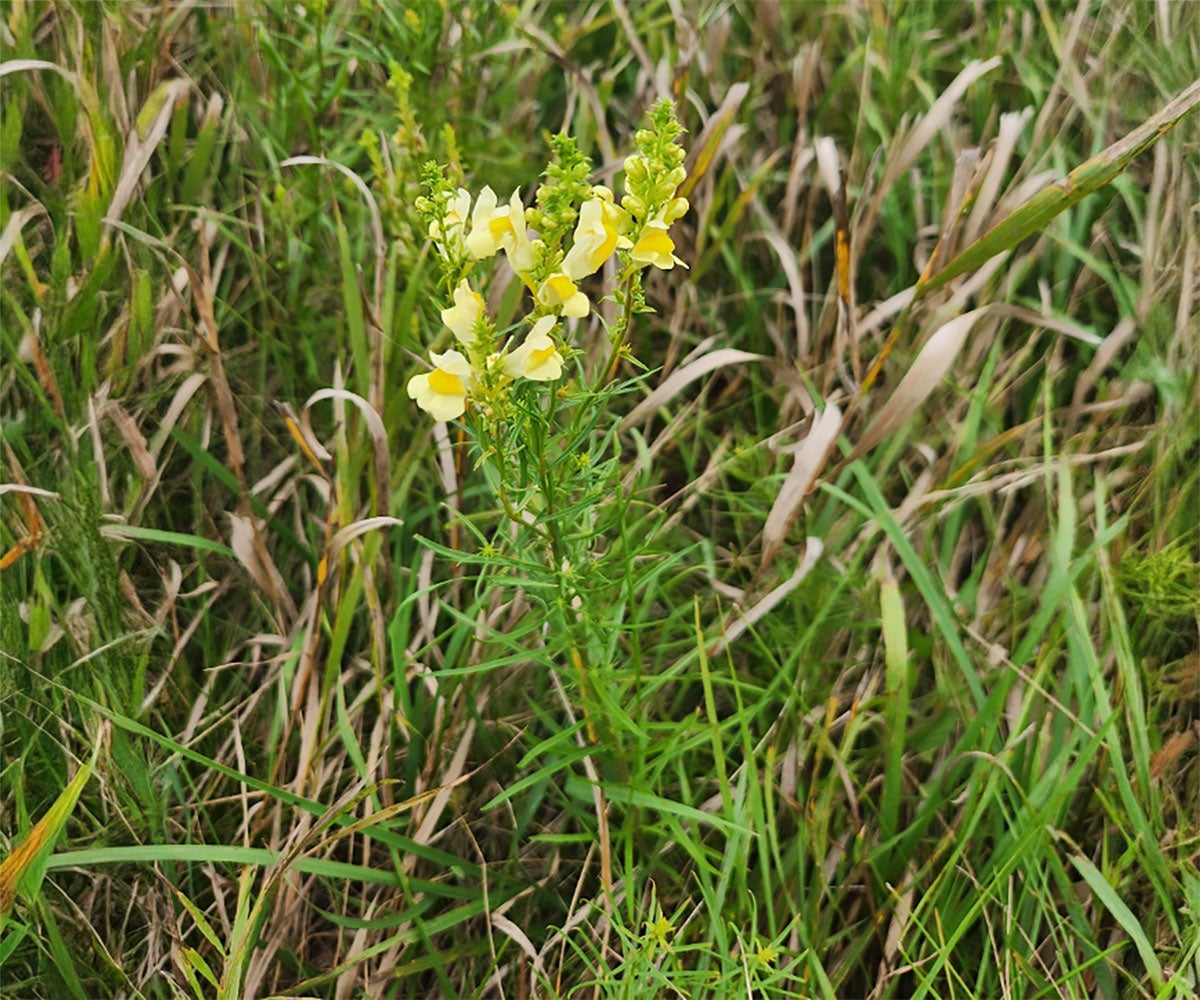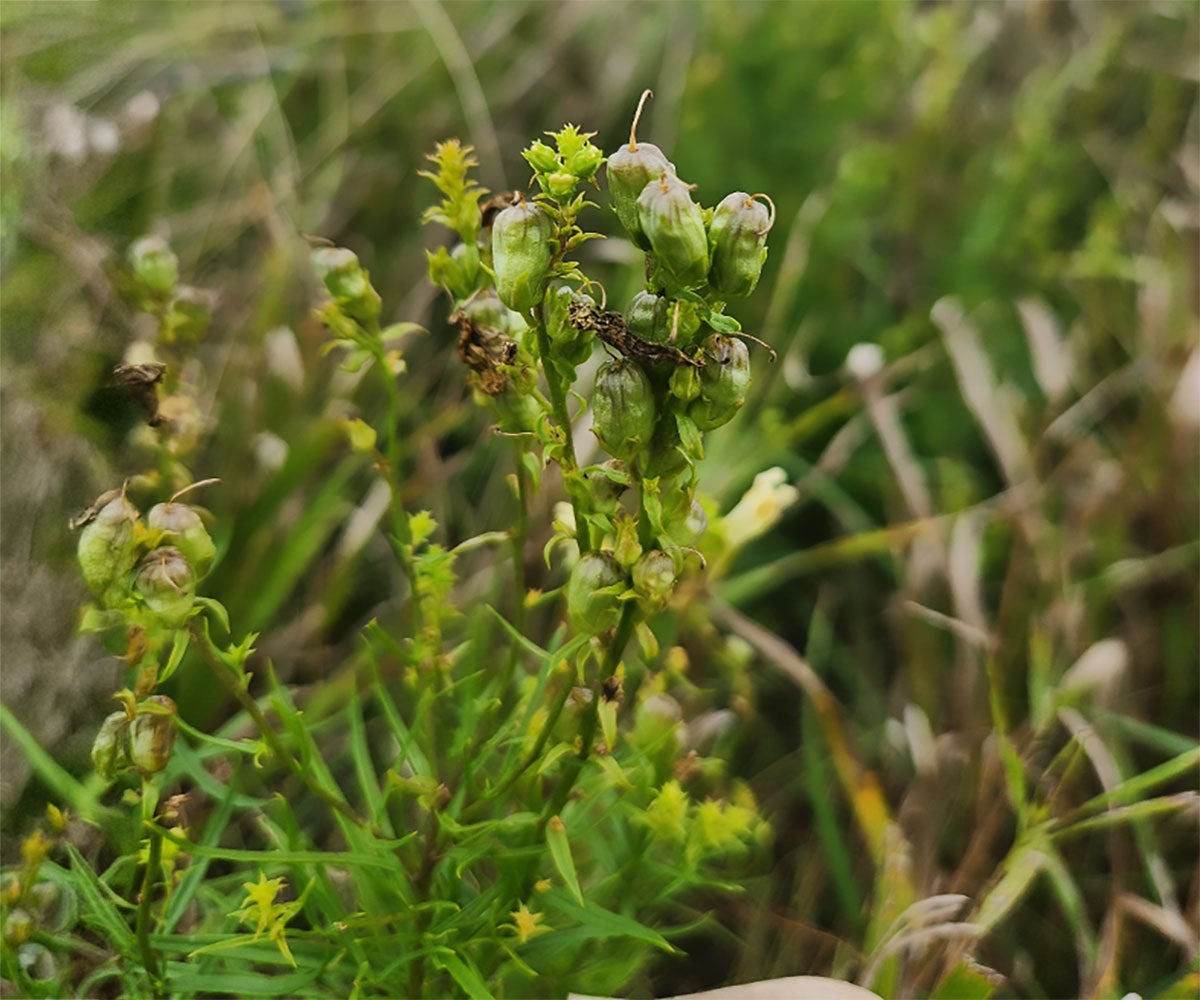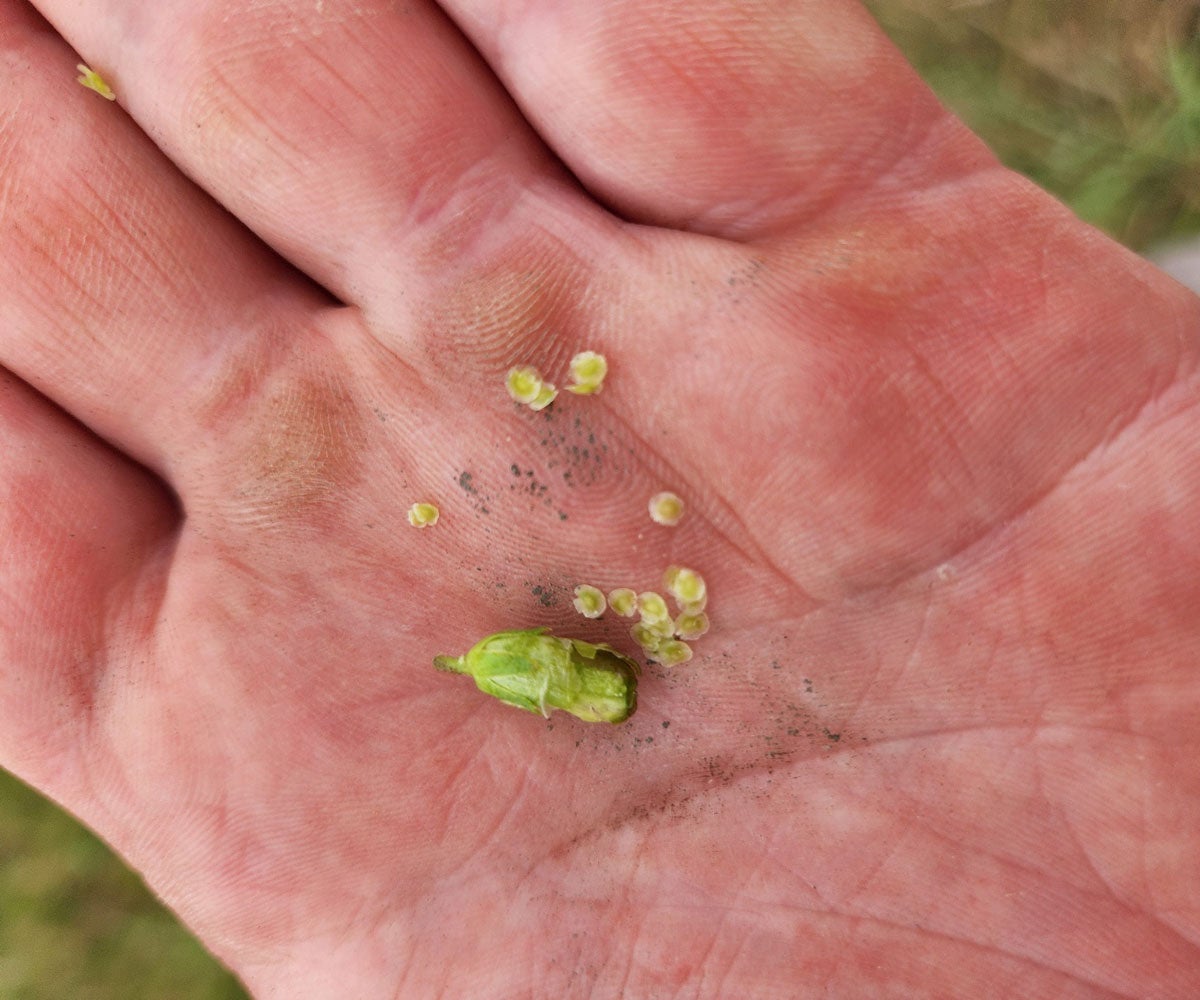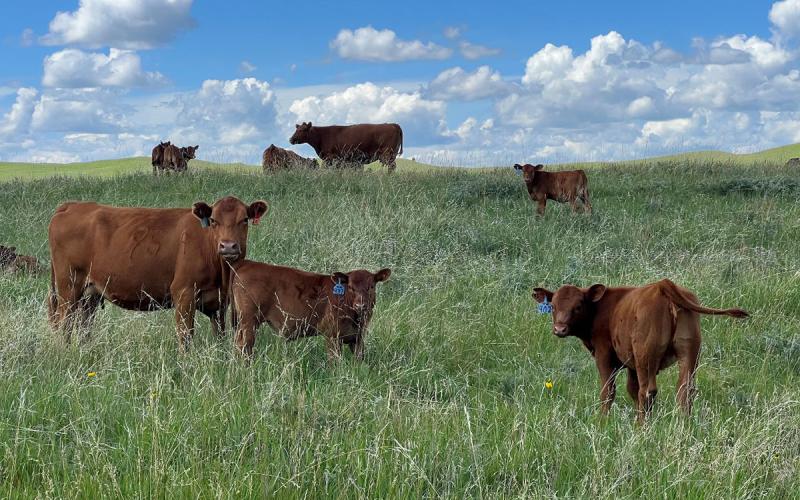
Written collaboratively by Eric Jones, Graig Reicks, Philip Rozeboom, Jill Alms, and David Vos.
Yellow toadflax is a perennial weed that infests pasture and rangeland across South Dakota. Compared with other perennial weeds (i.e., Canada thistle and leafy spurge), the appropriate time to spray yellow toadflax occurs in late summer between August and September. Last year, yellow toadflax flowering was delayed due to environmental conditions (https://extension.sdstate.edu/yellow-toadflax-has-not-flowered-some-parts-south-dakota). This year, with an abundance of heat and moisture, plants flowered on time (early August) and now have started to produce seeds. However, there are still plants that are flowering that could be treated in the infested areas (Figure 1).
Growth Stages
Yellow toadflax flowers are bright yellow and showy (Figure 2), this is the growth stage when herbicides are most effective. Shortly after flowering and pollination, the plants begin to produce seed pods that house seeds and herbicide applications are not as effective (Figure 3). At this stage, seeds are still immature but still have the capacity to be viable even after an herbicide application (Figure 4). The importance of managing plants before this stage is that the shape of the seeds are such that they can be dispersed by wind. Therefore, the infestations have the capacity to spread great distances depending on the topography.



Management Considerations

While the window to spray yellow toadflax is on the tail end, areas could be exhibiting more flowering than seed production. North of Eureka, South Dakota, there was a mixture of small, newly emerging plants (Figure 5) to plants that were just about to flower (Figure 5) on September 17, 2025. Herbicide application may be warranted to manage the plants in the correct stage, but also recognize that the herbicide will not be as effective as compared to having been applied several weeks earlier. Areas that are treated in such a state will likely need additional management efforts in the following growing seasons.
Before going to spray infested areas, scout to determine if there is an abundance of plants in the correct growth stage to ensure effective management. Refer to the most-recent Noxious Weed Management Guide and the specific herbicide labels for more information on effective yellow toadflax management.

